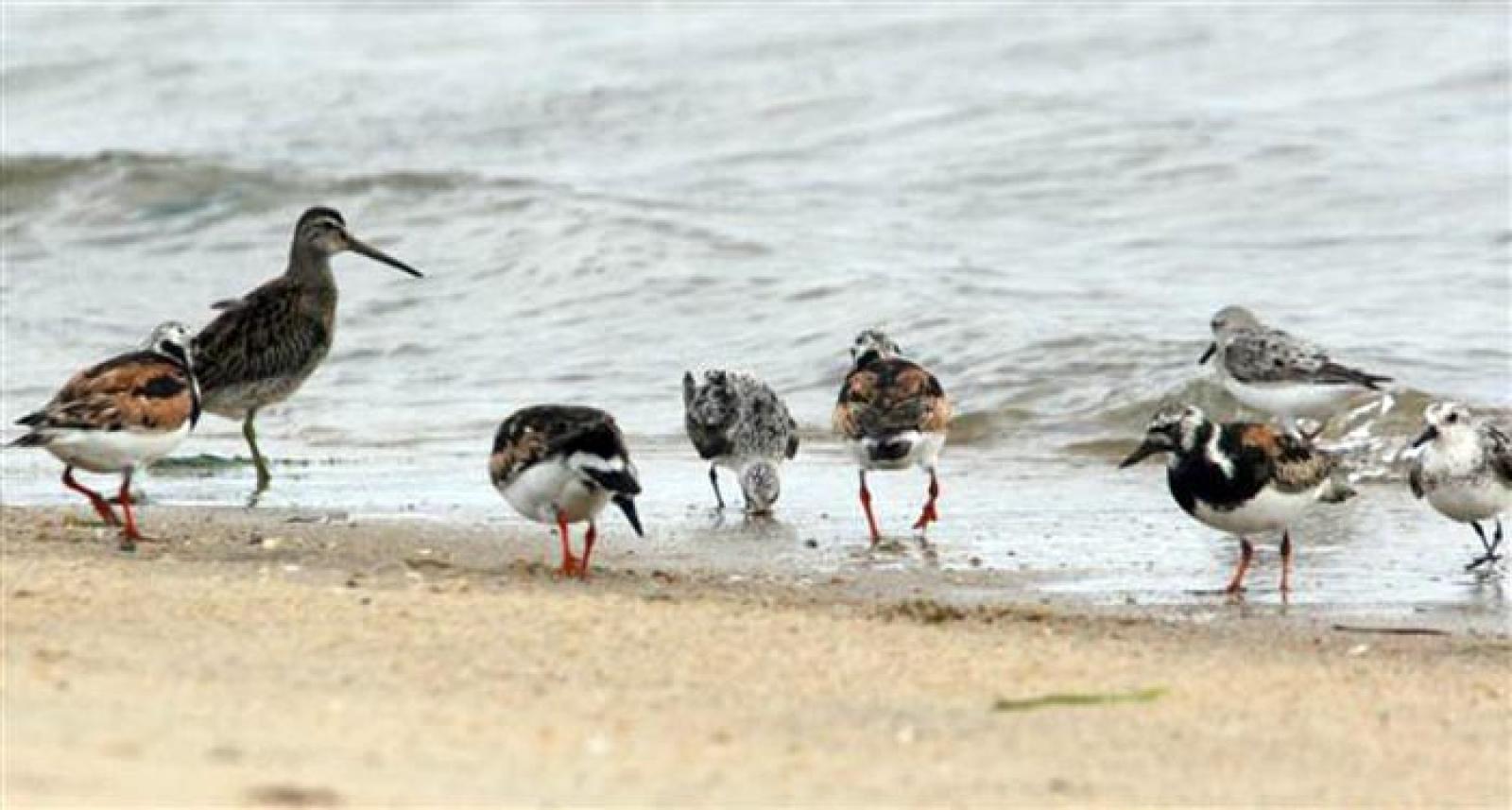The newly-hatched young of Arctic-nesting shorebirds are able to fend for themselves completely, just a few days after emerging from the egg. The parents shelter them some in those first few days and they sound an alarm for predators. They do not feed the youngsters, who learn to find food right away, capitalizing on the nightless days on a tundra expanse that erupts with abundant insect life.
Typically, the first of these shorebirds from the far north to reach the shores of the Vineyard in late summer are the parent birds who have discarded any further responsibilities of raising young and are already committed to the migrational process that will lead them to some other shoreline, likely a Southern Hemisphere habitat, as far as Tierra del Fuego for some of the species transient through the Vineyard.
The young ruddy turnstones, sanderlings, semi-palmated sandpipers, least sandpipers and dowitchers, plovers and yellowlegs that will eventually stop here to feed and rest must first capture enough food to fuel the growth of an entire set of body and flight feathers, transitioning from cryptic down in the beginning to crisply patterned long-distance flying machines capable of embarking on lengthy journeys coursing over featureless tundra, boreal forests and open waters, all without the guidance of any of the older generation.
When prey items, all sorts of invertebrate fare, are concentrated along the shoreline of ocean or bay, the competition for foraging territory can be an intense constant, some birds more aggressive than others and all of them moving from one to another feeding opportunity, caching the energy that will be required to sustain flight over the next southern dash.
— Lanny McDowell




Comments
Comment policy »